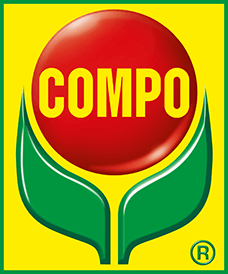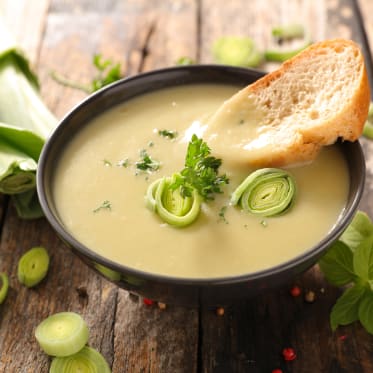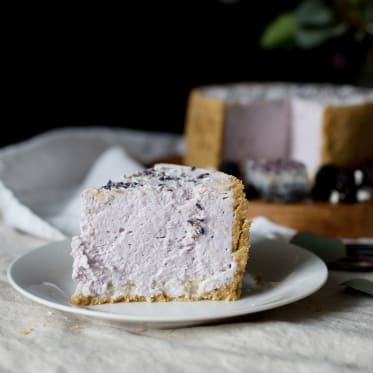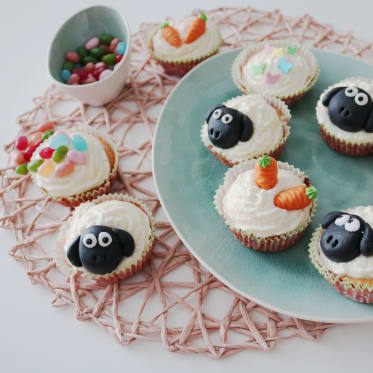Frequent search terms

- COMPO
- Guide
- Inspiration
- From the garden to the table
- Staying sweet through the winter with apples
Delicious recipe ideas for apples
Whether Gala, Boskoop red or Jonagold – apples from your own garden simply taste the best! In winter many garden owners have an abundance of apples in the cellar waiting to be prepared. You can find four delicious recipes for preparing apples and tips on suitable varieties here.

Our recipe for a wintry apple smoothie
For a good start to cold winter mornings, we are starting our apple series with a warming breakfast rich in vitamins. While the bright and colourful summer smoothies provide a fresh start to the day, warm winter smoothies tend to be based on different varieties of tea and delicious spices.
For the base of the apple smoothie, you need 200 ml of Chai tea that has been brought to the boil or warm cow's, nut or grain milk. The remaining ingredients can be put in a container to be puréed. You need one apple, cored and cut into pieces, and – optionally – cinnamon and honey as well as a little ginger for a long-lasting warming effect. You can also add raisins, chopped almonds or a little marzipan to the blender if you like. After everything has been puréed into a uniform mixture, add the hot liquid and mix all ingredients together on the lowest setting.

Our recipe for apple purée
Method
Unlike apple sauce, apple purée does not have any added sugar or other sweeteners. Varieties of cooking apples that unlock their sweet aroma when cooked are suitable for the finely puréed apple. While Braeburn, Cox Orange or Berlepsch are used to make an orange-coloured purée, apple varieties like Golden Delicious or Boskoop tend to create a golden yellow colour. We recommend not peeling the apples before cooking them, as the peel contains the most vitamins and the pectin under the skin ensures that the purée thickens a little.
After quartering the apples, first remove the stalks and cores. Then tip the apple pieces into a large pot with water and a little lemon juice. For a starting quantity of about 2 kg apples, we recommend adding 200 ml of water and the juice of 1-2 lemons. To create a wintry aroma, you can also add a cinnamon stick or vanilla pod to the pot before you start cooking. Now cook the apple pieces on a low heat with the lid on until you can easily mash them with a fork (roughly 20-30 minutes).
Once the apples have been cooked until soft, first remove the vanilla or cinnamon from the pot and then finely purée the remaining mixture with the immersion blender. In this condition, the apple purée can be kept in the fridge for around one week.
Preserve
If you would like to make the apple purée last longer, you can also preserve it. The success of preserving primarily depends on the jars being germ-free. Firstly, the jars become sterile when boiled in a pot of hot water, which means that the purée lasts for longer inside. Secondly, the jar has already been warmed up when you pour in the hot apple mixture, which prevents the jar from shattering. If you have collected standard jam jars with a screw top, turn them upside down after sealing until the mixture has cooled down. This will kill off the last remaining germs. When poured into the jars in a germ-free and vacuum-sealed condition, the purée should keep for at least one year. You can also preserve the apple in preserving or bottling jars as these generally make the contents last even longer.
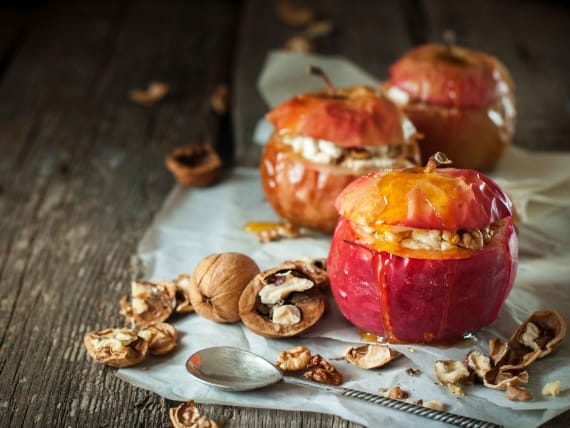
Our baked apple recipe
The baked apple is a classic among the wintry apple recipes and places no limits on creativity. To ensure that the apple retains its shape and aroma during cooking, you should use varieties of the cooking apple. The classic German cooking apple is the Boskoop, but Cox Orange, Berlepsch, Elstar and Jonagold will also work well for your baked apple.
To remove the core, you need an apple corer to preserve the outer shape of the fruit. To get enough filling into the apple, it is a good idea to cut out some more slices from the centre of the apple after removing the seeds. The filling depends entirely on your taste. A particularly popular base is chopped hazelnuts or almonds, but other types of nuts can certainly be experimented with. Sultanas or, even better, currants make a great fruity component, the latter are smaller and are easier to make an even filling with. You can use honey, syrup or apricot jam to help the filling stick together.
To give the baked apple a wintry flavour, the prepared filling can be refined with cinnamon, cardamom or cloves. But we recommend that you be sparing with cloves and cardamom, as these spices have a very intense flavour. A drop of rum or liqueur also tastes very good when added to the mixture. You can also add small pieces of nougat or marzipan to the mixture when stuffing the apple for an even juicier consistency.
Then place the stuffed apple in an open baking dish, sprinkle with curls of butter and bake for about 25 minutes in a pre-heated oven at 200°C. The baking time can vary considerably depending on the size of the apple but as a rule of thumb it is ready when you can easily pierce the apple pulp with a normal kitchen fork.

Our chutney recipe
Tasty apple on a cheese roll? All you need is a tasty apple chutney. To start, the recipe calls for peeling and coring the apple, then the slices are chopped into small cubes. Then finely chop 250 g of onions and two cloves of garlic and add to a pot with the apple cubes. You can also add a little ginger or chilli if you like. Then add 250 ml of red wine vinegar and 350 g of brown sugar. To season a wintry chutney we recommend a mixture of cinnamon, cloves, nutmeg and anise. The combination of mustard seeds, bay leaves and thyme is also delicious. Raisins give the chutney an exotic fruity flavour but they should only be added 15 minutes before the end of cooking, otherwise they completely disintegrate. Now cook the spiced chutney for one hour on a medium heat with the lid on, stirring the mixture well from time to time.
As explained for the apple purée, the finished chutney should be poured hot into sterile jars immediately after cooking.
More delicious recipes with home-grown fruit and vegetables
